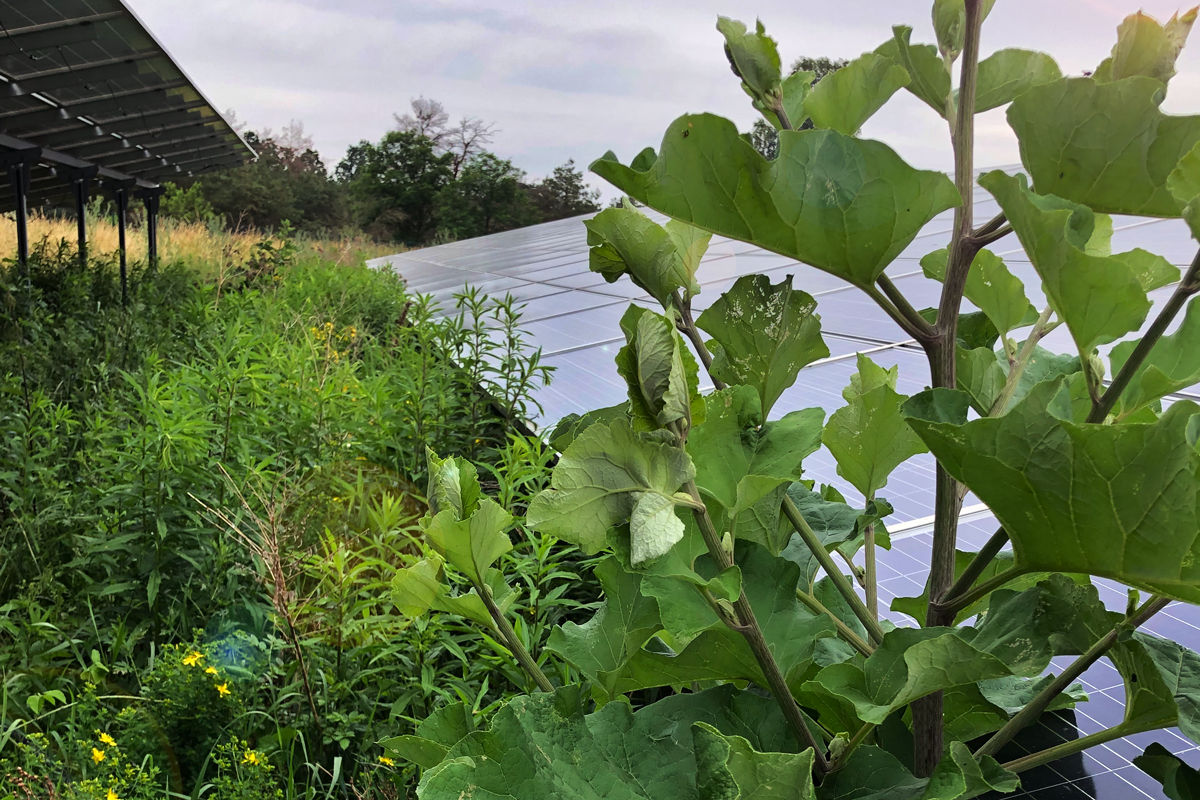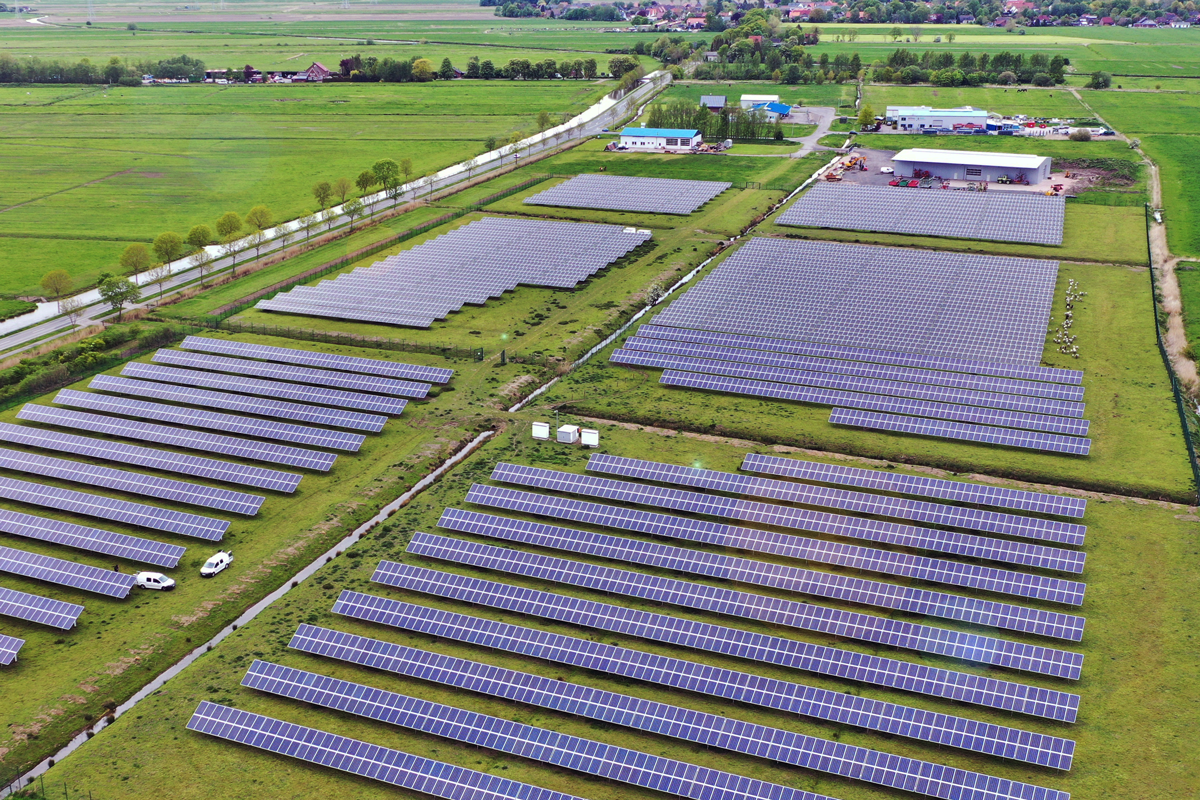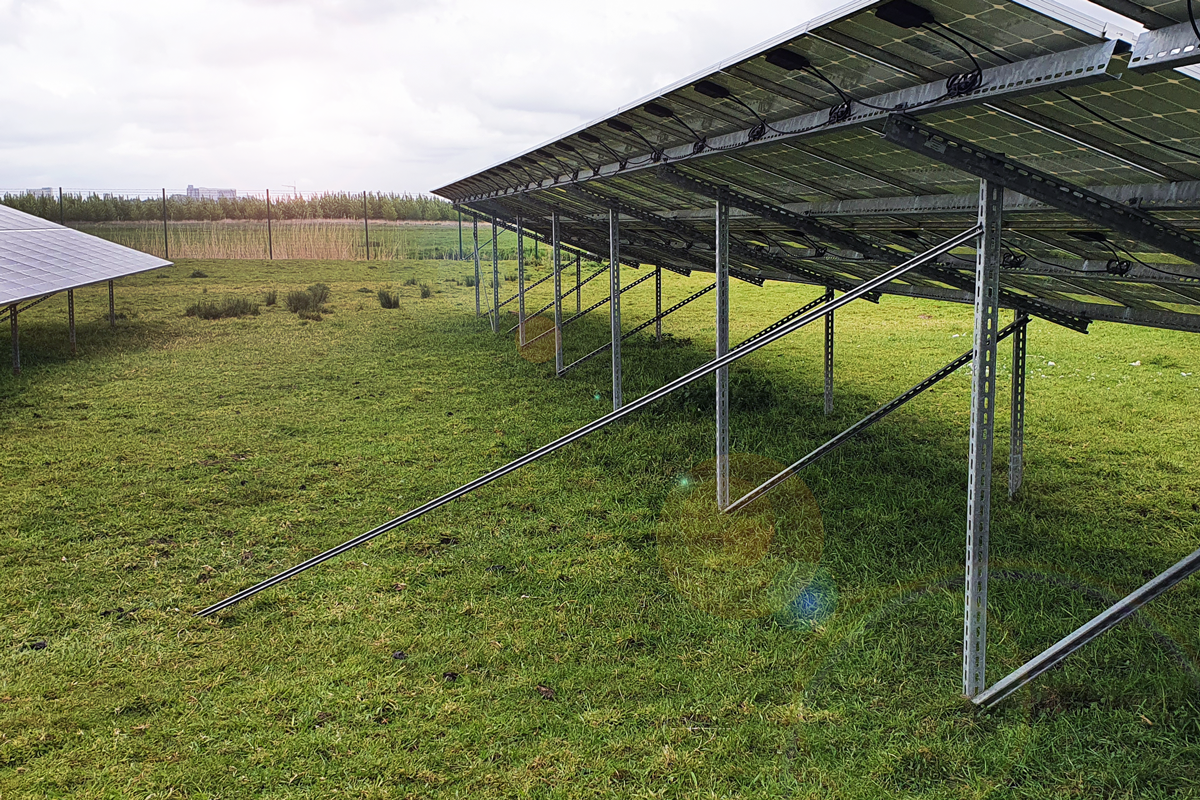
Green waste in solar parks
Landscape management is a key component for a sustainable ground-mounted system with maximum yields
While regular maintenance and cleaning help ensure the optimal operation of a solar plant, looking after the green space under the PV modules is just as im-portant. Otherwise, unkept grass and bushes may grow over the PV system, lead-ing to losses in electricity yield. But grass cutting isn’t always easy, as some areas of the solar park are difficult to access. That’s where specialised service providers come in, using machines to help with green waste. And where machines might be too much, sheep grazing is a sustainable and cost-efficient ecological alternative.
Increasing safety and efficiency
Sheep grazing as landscape management
Considering landscape management when planning
Green waste increases the safety and efficiency of solar plants
Whether a photovoltaic system is erected on a conversion area, on the edge of a highway, on farmland or on a green roof – solar plant operators must take a number of important factors into account to achieve the highest possible yields. Finding the optimal angle to the sun and choosing the distance between the PV modules so they don’t shade each other.
A third and often neglected factor is the maintenance of the underlying green space, which helps ensure that the ground-mounted system is running efficiently. Overgrown grass and shrubs would block the solar modules, leading to yield losses. Even a partly shaded module already restricts the flow of the electric current and can result in losses in energy yields of up to ten percent.
If green waste is neglected, plants might grow into the inverters or the safety system, causing faults or triggering false alarms – let alone rodents that could climb tall blades of grass and get into the module holder, potentially damaging the cables.
However, these risks can be largely avoided through conscientious landscape management. This also ensures that the solar park, including all electronics, remains easily accessible for maintenance and testing work.
Advantages of regular grass cutting:
- No yield losses due to blocking or shading
- Avoids damage to the modules by overgrown plants
- Easier maintenance in the long term, as the grass is kept short
- Avoids security risks
- Easy access to the electronics for maintenance and testing work

Solar park before green waste
Landscape management also promotes biodiversity
The open area under the modules can be managed in different ways depending on the location of the solar park. How often and when to mow, how to trim hedges and trees and much more is regulated by a Landscape Management Plan (LAMP). This plan specifies which seeds are to be used, where new trees and hedges are to be planted if clearing had to be done for plant construction, and the type of mowing to be done and with which machines.
The specifications help the ground-mounted system run as smoothly and optimally as possible and guarantee extensive grassland use to promote biodiversity in the solar park. That way, plants that would normally have no chance in conventional farm settings and might be facing extinction can instead grow in the solar park, creating new and valuable habitats for many animal species.
Sheep grazing as landscape management for ground-mounted systems
Using sheep for grass cutting is also beneficial for biodiversity. When sheep graze under the photovoltaic modules, their excrement provides fertiliser for the soil and spreads seeds. Pollen and seeds can also be passed on from their fur. In terms of breeding, ground-mounted PV systems offer ideal conditions because they’re usually fenced off, there’s no traffic and no artificial fertilisers are applied. The modules also help protect the sheep from excessive sun and rain.
Having sheep around is good for the solar plant operator’s pocket, too, as it incurs roughly a third of the cost of mowing by machine. Sheep can even graze under the modular tables, where it’s hard to reach with machines.
Sheep grazing is not entirely unproblematic, however. The animals might tear off cables or activate the security system’s motion detector, resulting in a false alarm. The care of sheep is also something to keep in mind. How exactly the land ought be used should therefore already be part of serious considerations when designing a photovoltaic system.

Solar park with grazing sheep
Thinking about landscape management when planning photovoltaic systems
If sheep grazing is the aim, special care should be taken during installation. Cables must be tied high and with no loops hanging down. Water points for the animals should also be considered carefully, and plant varieties suitable for sheep grazing should be chosen for sowing.
The elevation height of the solar modules is another important aspect. Sheep should be able to walk underneath without hindrance and not bump into the module edges. A distance of 80 centimetres from the ground has proved successful, a minimum height that’s also necessary for mowing with a ride-on mower. When mowing by machine, cables laid above ground must also be protected and not feature excessive cross bracing.
Can you use robotic mowers in solar parks, like the smaller ones used in regular garden maintenance?
In theory, yes, but in practice, grass cutting for solar parks is not fully automatic yet because certain prerequisites are almost never fulfilled. The ground can’t have any furrows or ruts, the devices don’t reach all areas of the plant (making manual mowing necessary for the fences or under the modules), and the lawns are simply too large for the smaller machines. Lastly there’s the risk of theft, which necessitates additional insurance and therefore deters many operators from considering fully automated green waste.
Specialised service providers with proper equipment
Solar park operators can often simply book the maintenance of the green spaces with their service partner, who takes care of the technical aspects of the system. Greenery and hedge trimming is also a very important part of the concept at Iqony Sens. The PV service provider puts great effort into vetting the companies that eventually become in charge of looking after the green spaces.
These partner companies mow or mulch under and between the photovoltaic rows so that everything remains freely accessible and the modules can utilise full solar radiation. They also cut back around the inverters, fences or transformer stations and do tree pruning right on site, ensuring that all management specifications promoting species conservation are adhered to.
Many of Iqony Sens’ local partner companies have adapted their tools specifically for solar parks. With custom-built machines, even hard-to-reach places can be worked on without any problems and in shorter periods of time. The result is a well-kept appearance of your photovoltaic system, more safety and a maximum yield of PV electricity.

Grass cutting under the modular tables
Your expert for solar plant care
Would you like to learn more? Then contact us! Iqony Sens has decades of experience in the care, maintenance and cleaning of ground-mounted PV systems, including dealing with green waste.
Pictures: Iqony Sens
Update: 29.06.2023
